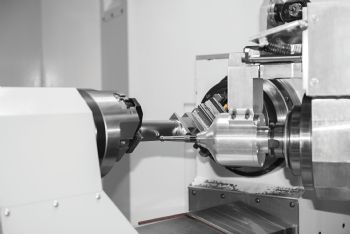
Birmingham-based Starrag UK Ltd (
www.starrag.com) has adapted the Dengeling micro-forging process to run on its Starrag LX machining centres. The process gives improved levels of surface finish, wear protection and workpiece residual strength to finish-machined components such as aerofoil blades — and it eliminates hand finishing and polishing. For example, components that traditionally had a surface roughness after milling of Ra 2.2µm can be micro-forged to achieve a finish of Ra 0.2µm.
Tests have shown that the automated process is more precise and more controllable than traditional shot peening — plus it offers shorter set-up and lead times, as well as repeatable quality compared to shot peening and traditional hand-finishing routines.
The Dengeling process operates via specially developed ThorCAM software which, for example, automatically detects and ‘protects’ edges, sharp edges, steep surfaces and small radii.
The micro-forging cartridge contains all necessary energy and media supplies for the forging ‘tool’ — a hard-metal ball — that is integrated into the machine’s milling head. Moreover, all actions are fully integrated with the machine CNC.
Alternatively, the forging unit can be supplied as a standalone ‘tool-holder cartridge’. In this case, energy and media supplies need to be connected manually, and control is separate from the machine CNC.
The forging unit induces high levels of kinetic energy into the component, creating ‘shock waves’ that radiate to the edge of the workpiece, penetrate up to 10mm deep and ‘distort’ the material structure to selectively increase internal compressive stresses. The process is already producing notable results in die-making, where the Dengeling process produces similar surface quality to hand finishing but in a shorter time.
In one instance, a 20mm-diameter micro-forging tool operating at a feed rate of 6m/min achieved overall time savings of 44%; and because surface roughness after milling can be coarser for micro-forging compared with that required for hand polishing, milling times can be reduced.